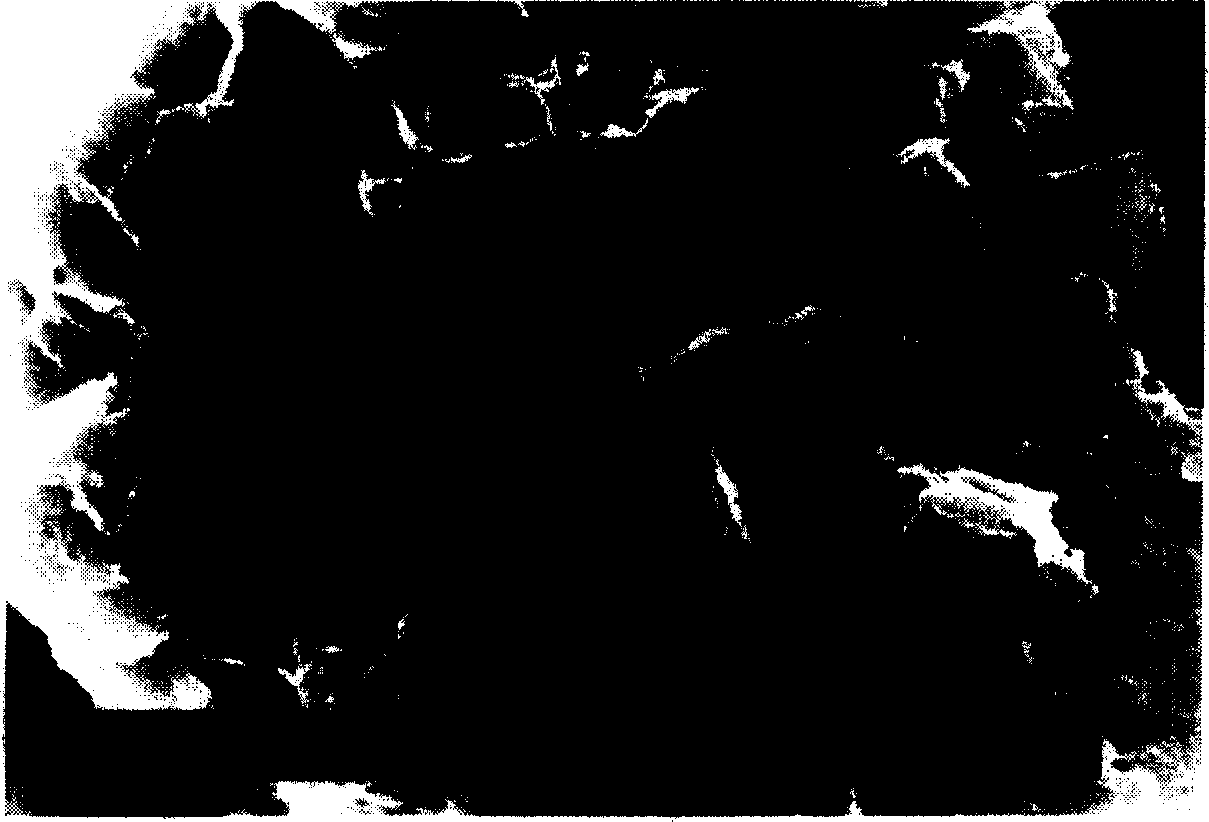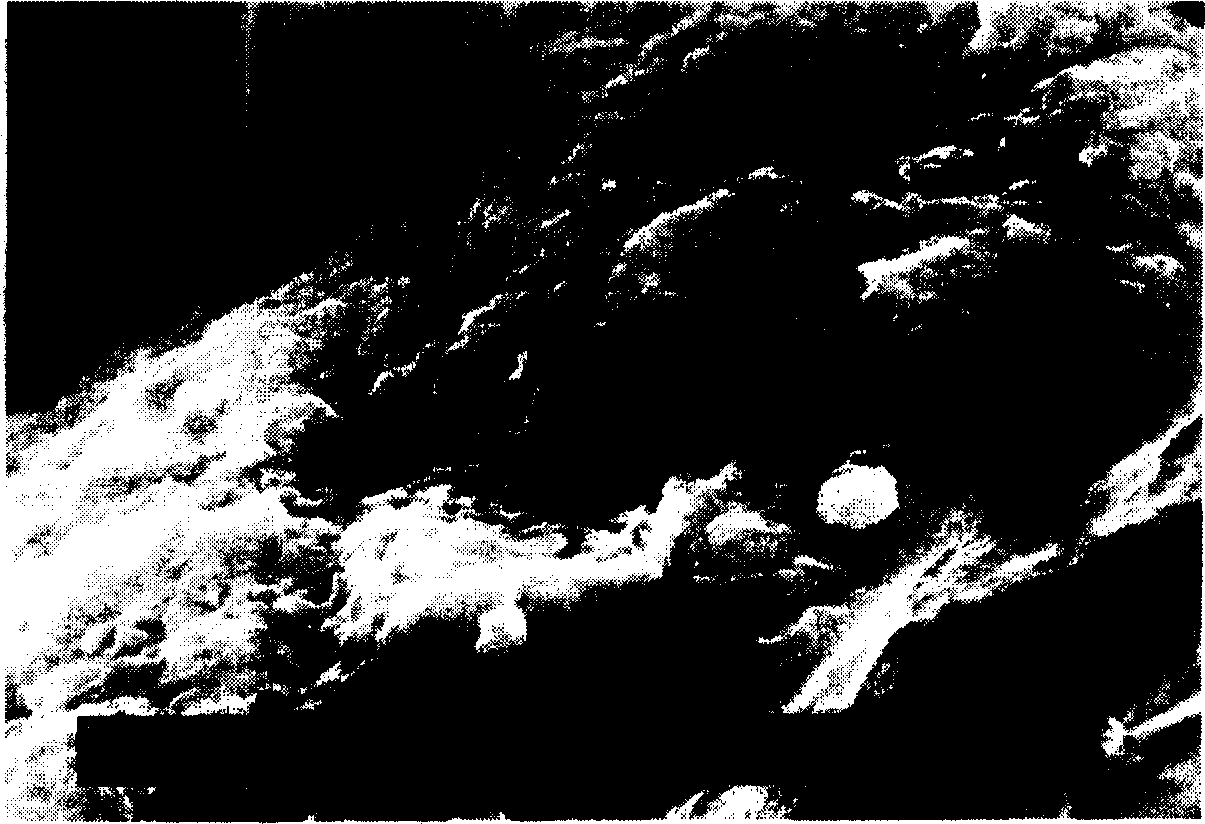Putamen type carbon cathode material for lithium ion secondary battery and preparation method thereof
A technology for secondary batteries and negative electrode materials, applied in electrode manufacturing, battery electrodes, circuits, etc., can solve the problems of electrode sensitivity to electrolyte, poor electrode performance, energy consumption, etc., and achieve low initial irreversible capacity, good charge and discharge. performance, the effect of reducing production costs
- Summary
- Abstract
- Description
- Claims
- Application Information
AI Technical Summary
Problems solved by technology
Method used
Image
Examples
Embodiment 1
[0018] Weigh 76g of artificial graphite with a particle size range of 5-50μm and 120g of medium-temperature coal pitch in a high-pressure reactor and mix them evenly. In a sealed state, heat up to 410℃ and react at a constant temperature for 1 hour, then put it into the reactor Add an appropriate amount of coal tar light component to dissolve the unreacted pitch, hot filter to obtain graphite coated with chemical deposition on the surface, and then further wash with pyridine in a Soxhlet extractor and dry at 60°C for 24 hours, and finally obtain The material was carbonized in a tubular carbonization furnace at 1000°C for 1 hour to obtain samples.
Embodiment 2
[0020] Weigh 76g of artificial graphite with a particle size range of 5-50μm and 120g of petroleum pitch in an autoclave and mix them evenly. In a sealed state, heat up to 410℃ and react at a constant temperature for 0.5 hours, then put it in the reactor Add appropriate amount of washing oil to dissolve the unreacted asphalt, heat it to filter to obtain graphite coated with chemical deposition, and then further wash with toluene in a Soxhlet extractor and dry at 60°C for 24 hours. Finally, the obtained material Samples were obtained by carbonization in a tubular carbonization furnace at 1000°C for 1 hour.
experiment example 1
[0022] In a glove box filled with argon gas and a relative humidity below 2%, the metal foil is used as the counter electrode and the auxiliary electrode, the electrolyte is, and the microporous polypropylene film is used as the diaphragm, and the working electrode prepared in Examples 1 and 2 Make up the experimental battery. The battery charge and discharge performance test is carried out on a constant current charge and discharge instrument. Charge and discharge voltage range: 0.005~2.000V, charge and discharge current density is 20.0mA / g. The results are shown in Table 1 and Table 2.
PUM
 Login to View More
Login to View More Abstract
Description
Claims
Application Information
 Login to View More
Login to View More - R&D
- Intellectual Property
- Life Sciences
- Materials
- Tech Scout
- Unparalleled Data Quality
- Higher Quality Content
- 60% Fewer Hallucinations
Browse by: Latest US Patents, China's latest patents, Technical Efficacy Thesaurus, Application Domain, Technology Topic, Popular Technical Reports.
© 2025 PatSnap. All rights reserved.Legal|Privacy policy|Modern Slavery Act Transparency Statement|Sitemap|About US| Contact US: help@patsnap.com


